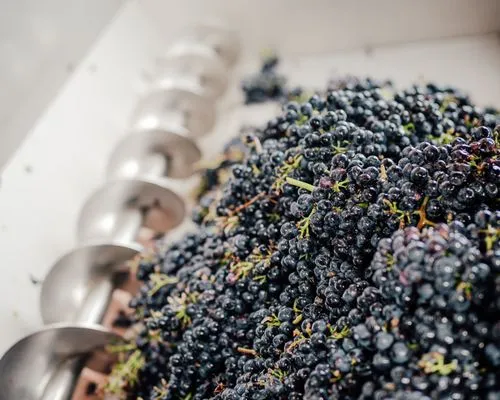With Swiss wine throughout the year
Graubünden barley soup in January
What could be better than a bowl of hot soup after a walk in cold temperatures? Graubünden barley soup is a particularly tasty soul-warming dish. As a general rule, things from the same region go together. For example, a Pinot Noir from the Bündner Herrschaft region harmonises well with this nutritious soup.
You can find a recipe for Graubünden barley soup here.
Polenta in February
Another dish for cold days is a Ticino polenta with beef ragout - or in a vegetarian version with vegetable ragout. The dish requires a wine that can hold its own, preferably a strong, structured red wine. A Merlot from Ticino or a Pinot Noir from Valais are therefore ideal.
If you would like to cook polenta with braised beef, you will find the right recipe here.
Fondue or raclette in March
Before winter finally says goodbye, it's time for some melted cheese. For raclette or fondue, you can't go wrong with a Chasselas or Fendant from Valais. A fruity, light red wine is also suitable. But beware: melted cheese and lots of tannins do not harmonise with each other, so the wine with fondue and raclette should not be aged in barriques.
You can find tips and tricks for preparing the perfect fondue here.
Zürcher Geschnetzeltes in April
Zürcher Geschnetzeltes is considered the Swiss national dish. The ragout of veal and mushrooms in a white wine sauce is traditionally served with rösti. This classic dish goes well with a full-bodied white wine such as Chardonnay or a light, fruity Pinot Noir. These wines complement the creaminess and add freshness.
You can find a recipe for Zürcher Geschnetzeltes here.
Asparagus in May
The first Swiss asparagus can be harvested in May at the latest. However, its slightly bitter flavour makes it a difficult partner when it comes to wine. One of the most important tips is to avoid red wine - especially wines rich in tannins or aged in oak. A strong Chardonnay, on the other hand, is a suitable accompaniment to asparagus with Hollandaise sauce.
There are many asparagus recipes. Find inspiration for new creations here.
Strawberry tarts in June
There are also wines to go with sweet dishes. Sparkling wines are a heavenly combination with fresh strawberries. Choose a rather dry one, as this balances out the sweetness of the strawberries. Fresh rosé wines also go well with strawberry tarts as a dessert, as many of them contain strawberry flavours.
If you want to make your own strawberry tarts from A to Z, you can find the right recipe here.
Fresh fish in July
On hot summer days, you are drawn to the water. Local fish is often on the menu in restaurants on Swiss lakes. Fresh, sparkling white wines without barrique ageing and without residual sweetness - such as Pinot Gris or Silvaner - go well with butter-fried perch, whitefish and zander. Tannin-rich red wines and the delicate protein of fish, on the other hand, are not particularly compatible.
You can find a recipe for perch fillets à la meunière here.
Cervelat from the barbecue in August
On Swiss National Day, a cervelat often ends up on the barbecue. Of course, a cold beer goes well with the traditional sausage - but it can also be combined with wine. The roasted flavours of a grilled cervelat harmonise particularly well with a fruity red wine that is low in tannins. A Pinot Noir from Valais or a smooth Geneva Gamay are perfect companions for 1 August.
If you want to add a little extra flavour to your grilled sausage, try this recipe for a homemade Cervelat skewer.
Valais cholera in September
Cholera is a typical Valais speciality: a hearty cake made from leek, potatoes, Valais mountain cheese and apples. If you want to stay in the same canton when choosing your wine, opt for a fruity Fendant or a Heida, for example. If you prefer a red wine by the glass, opt for a light Gamay.
You can find a recipe for original Valais cholera here.
Bratwurst with hash browns in October
When the temperatures start to drop, it's time to serve up a typical Swiss comfort dish: Bratwurst with onion sauce and hash browns, called Rösti in Switzerland. A full-bodied and fruity red wine is recommended to go with it, but it should not overpower the flavour of the sausage. How about a Pinot Noir from Eastern Switzerland?
You can find delicious Rösti recipes here.
Älplermagronen in November
If you are looking for the right wine to go with a dish, you can use the "weight" as a guide. In other words: heavy food calls for heavy wine. A lavish pasta dish with onions and a generous amount of cheese should therefore not be paired with a wine that is too light. For example, a buttery Chardonnay or a full-bodied red wine goes well with Älplermagronen.
Find out how celebrity chef Andreas Caminada prepares his Älplermagronen here.
Fondue Chinoise in December
A full-bodied and spicy red wine emphasises the flavour and goes perfectly with fondue chinoise. Fruity red wines also provide a nice balance. Recommended wine varieties are Syrah, Gamaret, Cornalin, Humagne or Merlot. If you prefer white wine, you should opt for a full-bodied wine that has matured in oak barrels, such as a Chardonnay or a Heida.
You can find a recipe for a very special fondue chinoise here.
Pretium
Related Articles
All the news about Swiss wines and exclusive reports.
To visit our site, you must be of legal drinking age in your country of residence.









